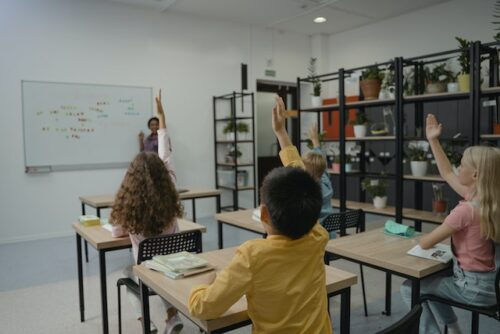Piotr Wozniak, 1990
From P.A.Wozniak, Optimization of Learning, updated and corrected Mar 6, 1998
The main thesis of this chapter is that the SuperMemo method will sooner or later permeate all forms of modern education. I realize that such a thesis, especially when presented by the author of the SuperMemo method may arouse doubts. Let us, however, have a cold look at the facts that are either substantiated in previous chapters or follow directly from common knowledge.
Universal nature of learning based on repetition spacing
A typical definition of education states that it is the process by which the mind and character of an individual are developed by means of teaching or learning. There are various forms of memory that an organism uses to store information about past events, but as far as the mind and character are considered, only the memory that is coded in the central nervous system is relevant. Even more so, the long term memory is of the primary interest since education is targeted at long term adaptation of an individual to his environment. In other words, all changes in human thinking, knowledge, personality, motivation etc., which education is supposed to further, are ultimately coded as long term changes in the central nervous system. If we consider such concepts as physical education we will discover that the term education is not always used in relation to pure nervous memory, but I shall disregard this inconsistency in the paragraphs that follow. As it was shown in the chapter dealing with the physiological basis of memory, there are two basic forms of learning – deterministic and stochastic (Chapter 10). Most of known forms of nervous learning seem to be either deterministic or stochastic. As it was discussed earlier, both the deterministic and stochastic learning require repetition to fix acquired skills or knowledge. Repetitions must be in both cases separated by strictly determined intervals of time in order to bring maximum fixation effect. We can imagine a discovery of neural circuits that do not require fixation whatsoever, but, as it was argued in Chapter 10, these circuits are likely to be closely related to primitive unconditional reflex action of lower levels of the nervous system, and as such they fall beyond the interest of education. One could also imagine circuits governed by rules different from that which formed the basis of the SuperMemo method, but again, as pointed out in Chapter 10, there is little probability of getting beyond the schedule of increasing intervals. Acquisition of all forms of textbook knowledge is based on deterministic learning and can be subject to SuperMemo repetition spacing. Similarly, most of other intellectual skills involve deterministic learning as well. Stochastic learning which makes up most, if not all, of the remaining training procedures can also be supervised by SuperMemo-like techniques (see Chapter 9). Hardly any place remains left for non-spaced learning, if it exists at all. It is therefore quite improbable to discover a magic way of making once induced synaptic changes permanent by a special training, nutrition, hypnosis, nonstandard repetition spacing, way of life, etc. The only imaginable and likely way of circumventing the need for SuperMemo repetition spacing is a direct intervention into the functioning of the human brain (e.g. by application of chemical agents interfering with the natural process of forgetting).
Most difficult application areas
The question remains how to apply the SuperMemo method in such different fields as creative thinking, problem solving, artistic education, etc. I do not have a ready answer but I am convinced that the SuperMemo method can be applied in all these areas.
Below, I skim the reasoning line which laid the ground for my conviction. All skills and knowledge furthered by education are acquired by application of selected stimuli to sensory receptors of an individual or by conscious generation of certain nervous impulsation by the individual himself. Listening to a teacher, reading a book, watching TV etc. are examples of education dominated by external, sensory stimulation while playing piano, solving a mathematical problem or painting require rather individual motivation which is generated consciously. In short words, education is intentional and controllable. The external stimulation can be analyzed and classified in order to yield particular stimuli responsible for evoking desired responses in the nervous system. These stimuli can be applied to student’s senses with the use of optimal repetition spacing. The most rough classification would split books into chapters, contacts with the teacher into particular lessons and watching TV in sections of a video cassette. The more refined one would apply the principle of minimum information discussed in previous chapters (e.g. asking questions concerning particular facts presented in a book, querying on sections of the video, etc.). The internal motivation can be analyzed and classified as well. For example, a decision to perform a piano training might be split into single decisions concerning particular passages. The greatest piano virtuosos spend hours repeating fingering exercises and endlessly replaying pieces of classical repertoire. All these elements of piano training can be treated as elements taking part in the SuperMemo process. As far as painting is concerned the difficulty might arise from the fact that many individuals considering themselves modern artists would have serious problems to specify what sort of skills are useful in their artistry or perhaps even what is the purpose of their work. Others, like Leonardo da Vinci, could prove that a true mastery is born out from constant sketching practices which, subject to appropriate analysis, can also be classified into categories identifiable with SuperMemo drills. In other words, whenever we know which educational procedures yield desired effects we can use them in the process of categorization and separation of individual stimuli that may take part in repetitions. I do not claim that the analysis and classification of educational stimuli is an easy task. I do claim, however, that it is perfectly possible and no efforts should be spared in our endeavors to employ the SuperMemo repetition spacing in all areas that at present may seem far from likely to be rationally controlled.
Creative thinking
To make my claims presented above more acceptable I will take on the toughest of problems in education – development of creative thinking. Creative thinking is later understood as thinking characterized by high unconventionality and ability of coming up with novel and useful ideas, especially in problem solving. There is no doubt that creativity in the above sense can be a subject to training and improvement [Evans, 1990].
There are two components of the neural network forming the brain that promote creative thinking:
- potentiating component which includes innate and non-specific acquired features such as the number of neurons, the number of interneuronal connections, axonal conductivity, glial support, vasculature, general health etc. For instance, Einstein’s brain was prominent for having much larger than average number of glial cells, thereby we can suppose that Einstein’s creativity was boosted by a good environment for his neurons to work in.
- plastic component which stores specific memories acquired during the life of the individual.
The potentiating component is to a large extent genetically determined although it can be reinforced by general hygiene and exposition to intense intellectual work. Thus only the plastic component can be a subject of a specific educational procedure. The consequence of the fact is that not everyone can be a genius because some individuals are born with a severely impaired potentiating component, which even does not allow them to master language skills to say nothing about getting any further. However, in a healthy individual, the plastic component accounts for quite a great deal of creative capabilities. Let us now consider what kind of information coded in the plastic component promotes creative thinking. Creative thinking can be compared to deduction, i.e. generating new formulae from the set of assertions considered true with the use of valid inference rules. NB. It can be shown that other forms of inference used in the process of thinking can be expressed in terms of deduction.
Because of the extent of the inferential search space, the selection of inference rules is partially guided by the trial-and-error strategy, which can be subject to optimization. Very much like in the process called in artificial intelligence explorative learning. Below, I list these characteristics of the plastic component of human intelligence, interpreted as a problem solving mechanism, that determine the efficiency of the deductive/creative process:
- Large number of facts stored in memory. The closer the relation of the facts to the domain of inference, the smoother the derivation.
- Large number of inference rules stored in memory. The greater the applicability of the rules to the facts/rules of the inference domain, the smoother the derivation.
- High degree of abstraction of inference rules. The degree of abstraction determines how universal the rules are i.e. how wide a range of arguments they can accept.
We should put a stress on the third point, the only one which has not yet been discussed and which is specific to the problem of creative thinking. Einstein, the symbol of creative thinking, does not seem to have been an extremely knowledgeable person. The great number of neither facts nor rules (points 1-2) seem to have played any special function in his scientific success. The power of his mind certainly consisted in the ability to think in abstract terms (point 3). It was a sort of homomorphism drawn between the universe of relativistic phenomena and the mundane reality that allowed him to think about objects governed by unheard-of laws of new physics as if about household implements. This confirms once again that the most powerful thinkers see the world in terms of models. Models allow to discard unimportant details, and inference rules operating on models accept a wider range of objects as their arguments. To see that learning to think about objects as about models is possible, let us consider two simple examples. In psychology, a well-known experiment consists in presenting a series of cartoons to an examined person in such a way that subsequent pictures are less and less distorted. The point of interest is at which stage of the experiment the individual is able to recognize the face. If we reverse the procedure then we can teach an individual to recognize distorted faces. A given face can serve as a SuperMemo item. In each repetition the item is distorted by another sort of filter to the same or possibly greater degree. In this way, a student can shape his ability to see faces as models; to discern only these features which make a given face unique. A similar strategy can be applied to learn analogies between typical mathematical problems and tasks encountered in all sorts of subject domains. In such a process, particular problems would be items while a repetition would consist in solving an instance of the problem, each time camouflaged in another sort of context. Thus, the student would acquire the ability of seeing mathematical laws as universal rules applicable to day-to-day life, and in consequence, the ability to perceive the world in terms of models. In other words, the ability of creative thinking can be enhanced in two ways: increasing the general knowledge of the individual, and more importantly, teaching the individual to think in abstract terms. If we consider other intractable domains of education, we could come to similar conclusions. Namely, that if we know the training procedure boosting a given skill then we can itemize it and intervalize the learning process, i.e. we can apply the SuperMemo method so that to satisfy the criterion of minimum time expenditure.
Prcis
Let us now have a concise review of my reasoning line presented above:
- All critical changes of the mind and character of an individual that are aimed at by education take place in the central nervous system.
- These changes have a long-term character.
- All known and studied long-term changes in the central nervous system tend to decline and have to undergo refixation if they are to be permanent.
- Refixation of long-term memory is characterized by the existence of optimal inter-repetition intervals.
- The SuperMemo method time-optimizes the refixation process by making use of optimal inter-repetition intervals, i.e. it allows to learn with minimum timeloads.
- It follows from points 1-5 that education could be made time optimal if the SuperMemo method were applied.
- The educational process is intentional (it reflexes our intention to change the mind of an individual) and controllable (we control particular steps of the process either as teachers or as students).
- Because the educational process is generated by our intentions and its particular steps can be controlled, we can use each of these steps (complying with the principle of minimum information) as an item of the SuperMemo process, i.e. we can apply SuperMemo in all forms of education.
- It follows from points 6 and 8 that the SuperMemo method can be applied to make all forms of education time optimal, i.e. to accelerate the process substantially without changing the final result.



